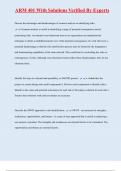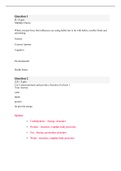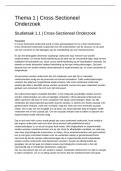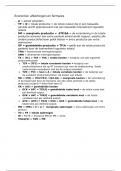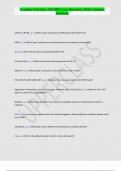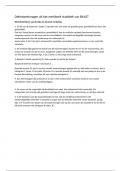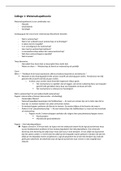Discuss the advantages and disadvantages of scenario analysis in identifying risks.
Scenario analysis is useful in identifying a range of potential consequences and in
prioritizing risks. An internal cross-functional team at an organization can implement the
technique to obtain a multidimensional view of the potential consequences of a risk. However, a
potential disadvantage is that the risk identification process may be limited by the imagination
and brainstorming capabilities of the team selected. This could lead to overlooking key risks or
consequences of risks. Although cross-functional teams reduce these disadvantages, they do not
eliminate them.
Identify the steps in a hazard and operability, or HAZOP, process. a. Subdivides the
project or system design into small components b. Reviews each component to identify risks c.
Identifi es the cause and potential outcome(s) for each risk d. Develops a solution for each risk e.
Ensures that solutions work and reevaluates as necessary
Describe the SWOT approach to risk identification. SWOT—an acronym for strengths,
weaknesses, opportunities, and threats—is a type of team approach that is useful in analyzing a
new project or product. The strengths and weaknesses are internal factors to be considered. The
opportunities and threats are external factors.
,ARM 401 With Solutions Verified By Experts
Explain the ideal outcome of a SWOT analysis. The SWOT analysis should ideally
conclude with a "go" or "no go" recommendation for a specifi c project and should include
discussion on whether weaknesses or threats can be converted into strengths or opportunities.
Brianna, the risk manager at Build It Construction Co., has disseminated a forklift safety
checklist among operators. Why might this action prove only partially eff ective?
Brianna's checklist can communicate known risks to Build It's forklift operators. For
example, it can require them to examine seat belts, headrests, masts, carriages, forks, battery
connections, lights, horns, and brakes and to check for fuel leaks. But it can't tell them whether
the forklift manufacturer issued a recall or predict that a critical part is about to fail.
How do emerging risk assessment tools and techniques, such as sensors, radio frequency
identification tags, artificial intelligence, and computer vision, complement traditional risk
identification and analysis techniques? Emerging technologies and smart devices provide
real-time data used for dynamic risk identifi cation and assessment. Although these technologies,
products, and operations don't replace more traditional risk identifi cation and analysis
techniques, they do overcome some of the shortcomings of the traditional methods. For example,
they can quickly explore a vast number of possible outcomes based on large datasets.
What is the purpose of an individual risk register? Individual risk registers can be used to
identify, describe, and prioritize risks for specifi c scenarios, projects, departments, business
, ARM 401 With Solutions Verified By Experts
units, and processes. Risk management professionals can use individual risk registers as the basis
for a larger organizational risk register that prioritizes all key risks (compiled from the individual
registers).
Chemtime, Inc., an organization that manufactures chemicals, wants to develop a risk register for
a fire scenario. Which tasks should its risk register be designed to accomplish? No matter
how an organization chooses to design its risk register, risk management professionals should
ensure it accomplishes these tasks: • Identifi es the organization's risks appropriately • Prioritizes
risks according to their potential eff ects on the organization • Allows for collaborative use and
instant updating by risk managers and stakeholders • Tracks improvement actions to take, when
they're taken, and when a follow-up or review will occur
What is the description and purpose of a basic risk map? A basic risk map translates the
risks identifi ed in the risk register into a risk diagram, which often takes the form of a heat map.
This diagram can identify the likelihood and consequences of risks and their relationship to the
organization's risk appetite
Aleski is the risk manager for a jeweler who wants to open a new store in the middle of a
crowded metropolitan area. After assembling a team to identify associated key risks and plot
them on a risk map, Aleski fi nds that two risks, employee theft and customer theft, have
identical levels of likelihood and fi nancial consequences. How should Aleski determine which

